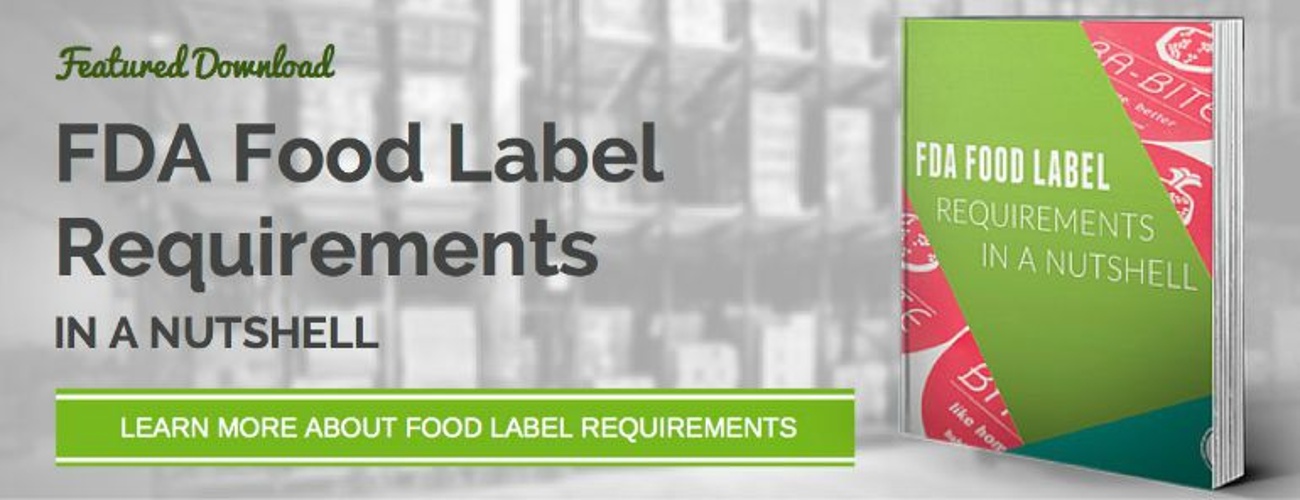This article was originally featured on Rachel Zemser's website, The Intrepid Culinologist, and is published here with permission.
 The Fancy Food Show was in town this January! I love wandering around the show, checking out the trends and secretly searching for false claims, labeling violations or stuff that is just misleading. That’s what food scientists do-- and then we pick up the phone, call the FDA and make sure violating entrepreneurs are BUSTED!!
The Fancy Food Show was in town this January! I love wandering around the show, checking out the trends and secretly searching for false claims, labeling violations or stuff that is just misleading. That’s what food scientists do-- and then we pick up the phone, call the FDA and make sure violating entrepreneurs are BUSTED!!
The reality is, there are just way to many products out there for the FDA to inspect for compliance and unless your product is under USDA jurisdiction. Plus, you don’t even have to have it inspected or approved before putting it on the shelf.
This is all the more reason to do your diligence and make sure you don’t accidentally lie, mislead or omit any important information.
Here are a few common mistakes that start up food entrepreneurs make that could result in a product recall or even worse—causing someone to get sick or die!
Allergen Labeling
It is very important that you clearly state any of the 8 major allergens that are in your product. They include:
- Milk
- Eggs
- Fish
- Shellfish
- Treenuts
- Peanuts
- Wheat
- Soy
Double check every ingredient that goes into your product to make sure they don’t have hidden allergens (like dry seasoning blends that may have soy or nut powders in them).
Just check out the FDA recalls and you will see how many products are recalled almost every day for accidently not listing an allergen. By the way—coconut is considered an allergen in the USA, and Canadian allergens include sesame seeds and mustard.
Serving Size
Unfortunately, your 1 Lb. muffin that delivers 9 grams of protein is not an honest serving size!\. The FDA has what is called RACC (Referenced Amounts Customarily Consumed) and they say a normal muffin size is 55 grams (that’s about 2-oz). You may not consider this a portion, but the FDA does. Watch your sizes and base your nutritional information on what is the reference. Its all right here in Title 21 of the CFR part 101.12.
All Natural
The FDA does not have an actual definition of all natural and there have been plenty of class action lawsuits. The rules are vague and there are lots of ingredients that may seem natural (like modified food starch and alkali processed cocoa) that are not. You have to figure that if big companies like Trader Joe’s and Ben and Jerry’s are getting sued then you can get in trouble too. Your best bet is to just stay away from the all natural term.
The all natural terminology is just so 10 years ago anyway-- try to focus on other ways to market your product in a more measurable and certifiable way (gluten free, kosher, organic, etc.)
Net Carbs
This is a made up word used to indicate the total number of carbohydrates minus soluble fiber and sugar alcohols. The term is not based on sound science and can give consumers the false impression that they do not contribute any calories or raise blood sugar levels.
The FDA has not has not yet taken a position on words like “net carbs” on your food package-- however they will evaluate labels on a case by case basis to ensure that the brand owner is not “characterizing” the amount of carbohydrates in a product. For example, saying your product “only” has 5 carbs per serving is characterizing it—you are doing more than just stating the facts.
If you do want to market your product as having a lower carbohydrate level and imply that it will help with weight loss, be very careful of your wording and run your final statements by a regulatory lawyer expert!
Keep It Real
I know that all food entrepreneurs have the best of intentions and want to make sure that their creations are healthy and clean. However, there are many tempting and alluring food science shortcuts that will make your product taste great or last longer on the shelf… but can all of a sudden make your product not as “real” or as “clean” as you want it to be.
Don’t try to hide what you are doing! If you are going to jack up your fiber levels with soluble corn fiber then just put it on the label and fess up. Calling your natural flavors as “extracts” is not fooling anyone (ok maybe it is, but you know deep down that you are misleading!). Don’t try to downplay your protein sources or bacteria inhibiting preservative levels.
In Conclusion
Before you put your product on the market have the entire package reviewed by a regulatory lawyer or food scientist. Hidden mistakes can result in millions of dollars lost as well as your brand name reputation.
Editor's Note: If you'd like to hear more about the general guidelines for what else should be on your food labels, see this article, The 8 Most Important Elements To Include On Your New Food Label, for a short list.
About The Author
 Rachel Zemser is a Certified Culinary Scientist, with experience and degrees in both food science and culinary arts. She has a BS in Food Science from the University of Massachusetts, an MS degree in Food Microbiology from the University of Illinois and a culinary arts degree from the New York Restaurant School/Art Institute.She has been working in the food industry for 18 years in both technical and creative roles and has been widely published in trade journals like Culinology, Food Product Design, Prepared Foods, The World of Food Ingredients and Food Processing. She spent 3 years at Unilever working as a microbiologist, 5 years at Kagome Inc. as their R&D chef and almost 3 years at Plum Organics Inc. Rachel’s home base is in San Francisco but she spends most her time all over the U.S. working with both large and small start up companies assisting them with their food science and R&D. Rachel’s work experience can be viewed on LinkedIn and she regularly tweets about the food industry.
Rachel Zemser is a Certified Culinary Scientist, with experience and degrees in both food science and culinary arts. She has a BS in Food Science from the University of Massachusetts, an MS degree in Food Microbiology from the University of Illinois and a culinary arts degree from the New York Restaurant School/Art Institute.She has been working in the food industry for 18 years in both technical and creative roles and has been widely published in trade journals like Culinology, Food Product Design, Prepared Foods, The World of Food Ingredients and Food Processing. She spent 3 years at Unilever working as a microbiologist, 5 years at Kagome Inc. as their R&D chef and almost 3 years at Plum Organics Inc. Rachel’s home base is in San Francisco but she spends most her time all over the U.S. working with both large and small start up companies assisting them with their food science and R&D. Rachel’s work experience can be viewed on LinkedIn and she regularly tweets about the food industry.
Topics: Food Manufacturing, Quality Control












